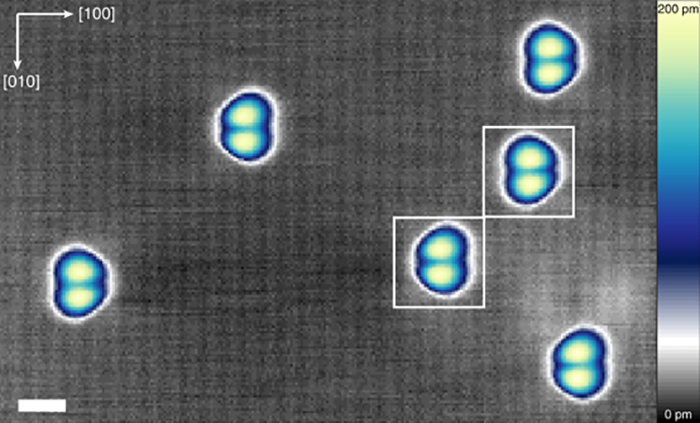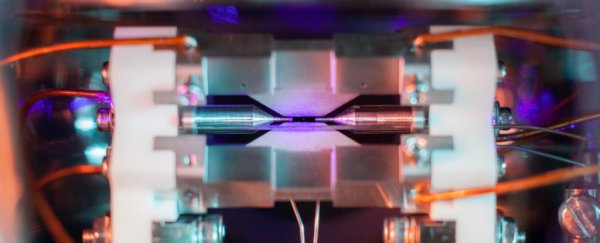Humanity is producing so much data every single minute that we either need to slow down, or scientists need to crack the problem of finding better ways of storing that data ASAP. Now, new research has taken us one step closer to the ultimate in compact data storage: putting data on a single atom.
As the basic building blocks of all matter, atoms are the smallest object we could possibly store a bit (a 1 or a 0) on, potentially shrinking down the size of existing hard drives by about a thousand times or so, if we can figure out how to get it to work.
Scientists have already made progress in storing bits on atoms, but only on a small scale and in tightly controlled lab conditions, which usually means extremely cold setups.
In an exciting development, the latest study from a team at Radboud University in the Netherlands identifies a new mechanism that could potentially work at room temperature.
 Magnetised cobalt atoms. (Radboud University)
Magnetised cobalt atoms. (Radboud University)
One important factor was the choice of materials: single cobalt atoms on a layer of semiconducting black phosphorus. Another was the method used to magnetise the atoms to store bits, which differed from the usual approach of utilising spin angular momentum – the way electrons spin as they orbit the nucleus.
"Instead of this spin angular momentum, which previous researchers have used, we figured out a way to make an energy difference between a few of the orbitals of the cobalt atom and now use the orbital angular momentum for our atomic memory," says one of the team, Brian Kiraly.
"This has a much bigger energy barrier and might be viable to make the single atom memory stable at room temperature."
It's still a big "might" right now – it could take quite a while to get this proof-of-principle from the lab to your next computer – but the signs are promising. In particular, the new materials and method might solve the problem of keeping atoms both magnetised and stable enough to be useful.
"What defines a permanent magnet is that it has a north and a south pole, which remains in the same orientation," says one of the researchers, Alexander Khajetoorians.
"But when you get down to a single atom, the north and south pole of the atom start to flip and do not know what direction they should point, as they become extremely sensitive to their surroundings."
In previous research into single-atom storage, researchers have used extremely cold temperatures to ensure that stability, as low as 40 Kelvin or -233 degrees Celsius. The new experiment also required extreme cold to work, but the scientists predict it wouldn't be as sensitive to rises in temperature as other methods.
As in other studies, the team used a special scanning tunneling microscope to scan atoms – a device that uses the 'tunnelling phenomenon' of quantum mechanics to push electrons through a specific barrier.
It might be a while before the same kind of setup can be crammed into a laptop or a smartphone, but this study has put us closer to that goal. And when we get there, you should be able to save as many photos and videos as you like.
"What this work means is that, if we could construct a real hard drive from all these atoms – and we are still a long way from that – you could store thousands of times more information," says one of the researchers, Alexander Khajetoorians.
The research has been published in Nature Communications.
